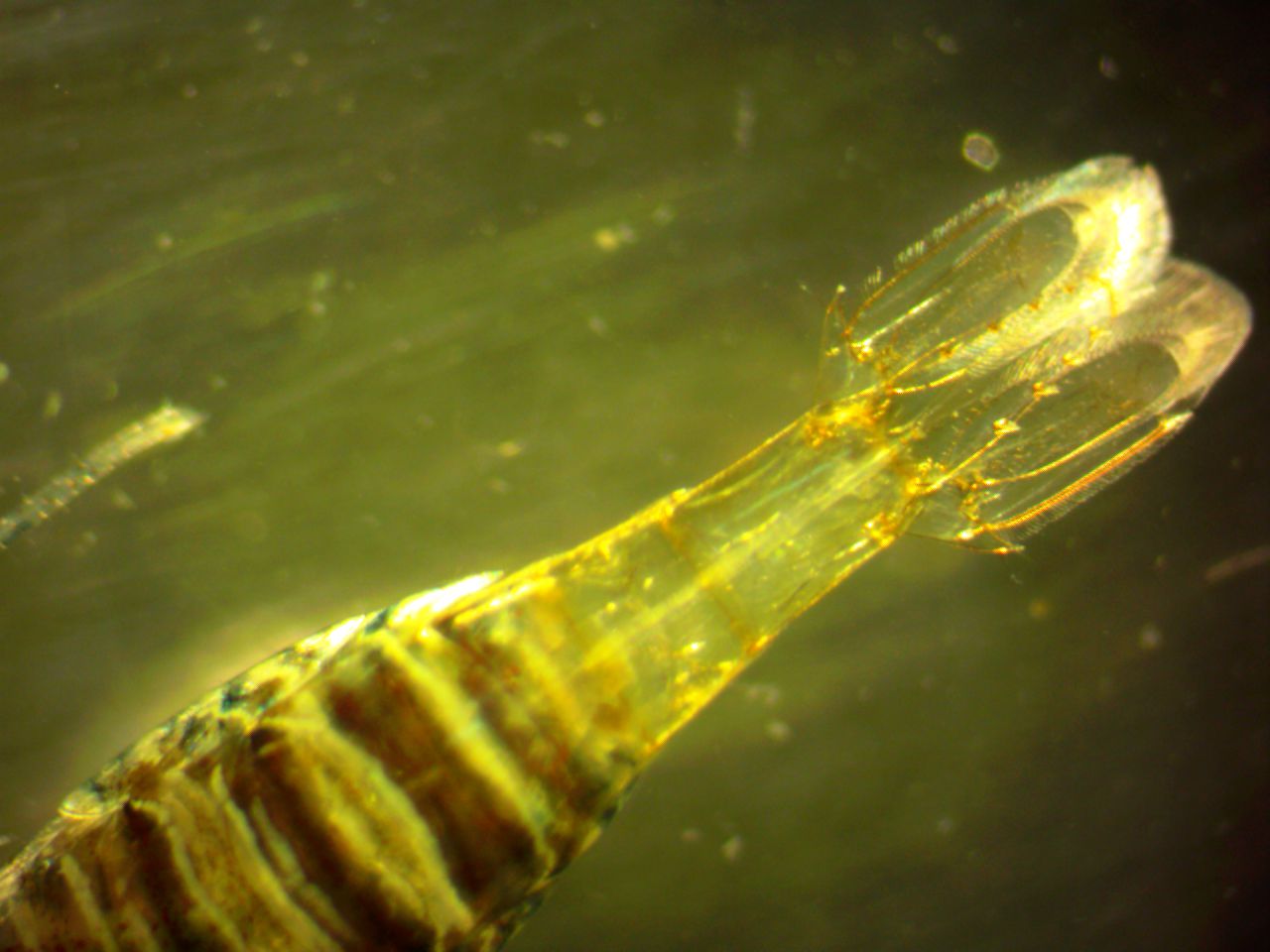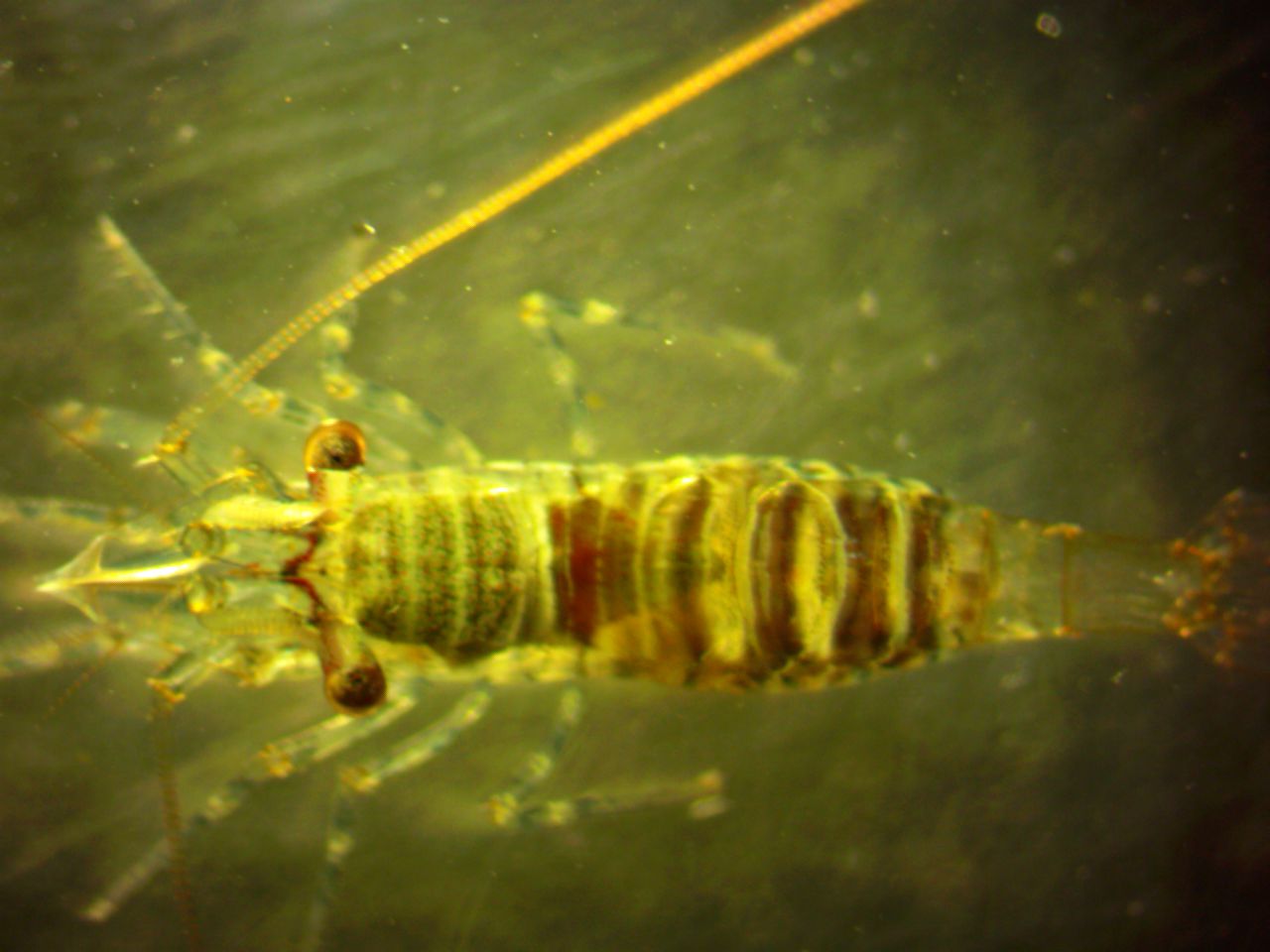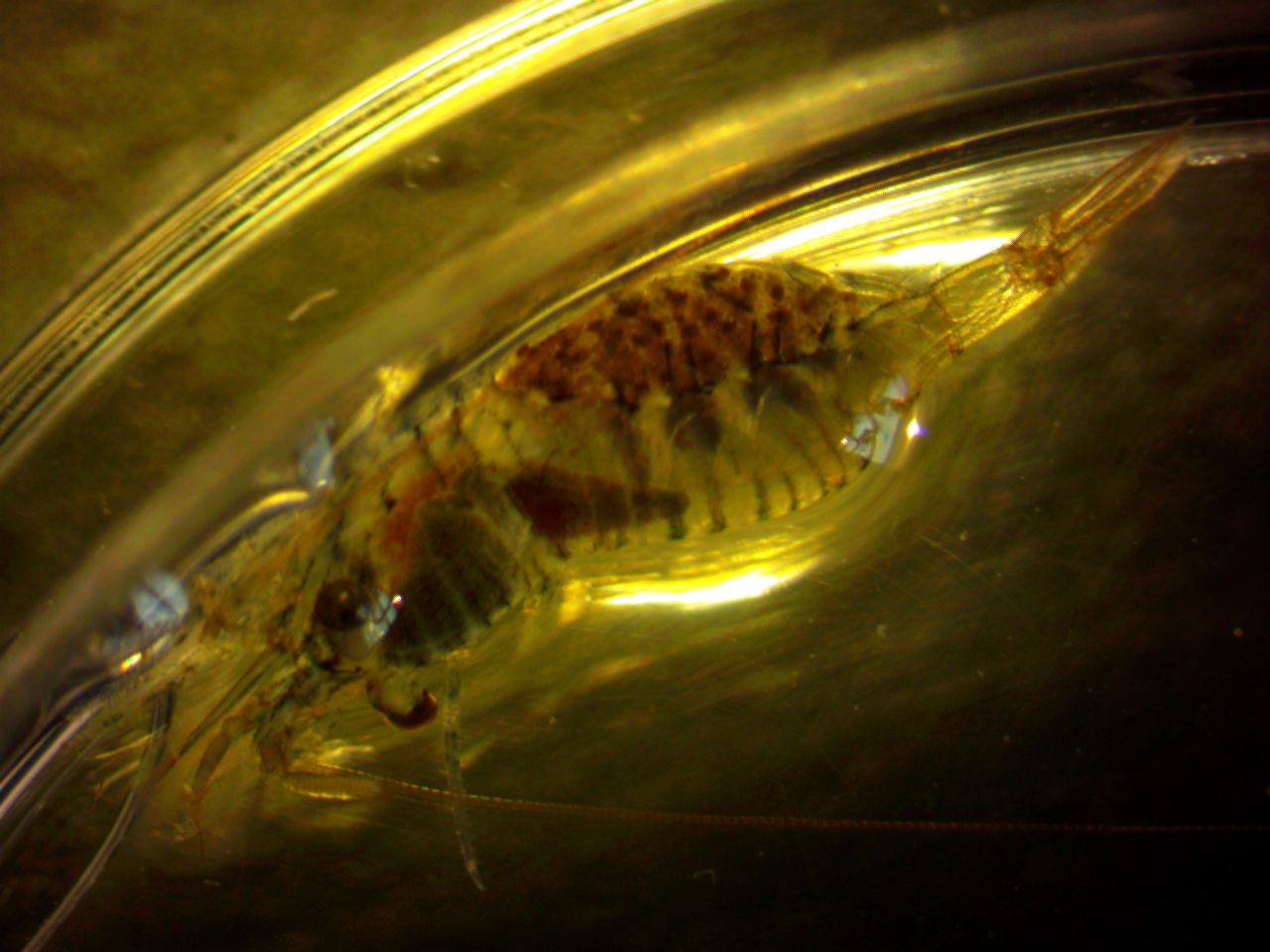Heptacarpus pugettensis Jensen, 1983Common name(s): Puget coastal shrimp, barred shrimp |
|
| Synonyms: |  |
|
Phylum Arthropoda
Subphylum Crustacea
Class Malacostraca
Subclass
Eumalacostraca
Superorder Eucarida
Order Decapoda
|
|
| Heptacarpus pugettensis, found under a low-intertidal boulder on Sares Head. Carapace length 3.5 mm, total length 15 mm. This female is carrying eggs. | |
| (Photo by: Dave Cowles, July 2017) | |
Description: Members of Family Hippolytidae have no exopodites on pereopods 1-5, pereopod 1 is chelate, the carpus of pereopod 2 is divided into (3 or) 7 articles, the eyes are not covered by the carapace, the rostrum is present but does not have movable dorsal spines, and the abdomen turns downward at segment 3, forming a 'hump'. Heptacarpus has the carpus of pereopod 2 divided into 7 articles. It has no supraorbital spines, and no exopodite on maxilliped 3. H. pugettensis has no epipodite on pereopod 3 (although it does have an epipodite on pereopods 1 and 2). Dactyls of legs 3-5 have bifid tips. The rostrum is short, reaching to the eye but not reaching past the end of the first article of antenna 1 (photo) and usually having a ventral tooth near the tip. The first article of antenna 1 has a single dorsal spine near the end (photo). Has transverse, thin red and yellow-colored stripes on the dorsal abdomen and wider transverse greenish-yellow colored bars on the ventral surfaces of the abdomen. The greenish-yellow ventral bars on the abdomen can sometimes be seen from above, making the shrimp look striped like a small bee. Other times the bars are obscured by the dorsal stripes. The tail fan and last 2 segments of the abdomen are transparent (photo). Length to 2 cm.
How to Distinguish from Similar Species:H. brevirostris has an epopodite on leg 3 and 3-5 small dorsal spines but no ventral spines on the distal part of the first article of antenna 1. It also gets much larger and is colored very differently. H. palpator has transverse colored stripes but its rostrum reaches past the eye.
Geographical RangeSitka, Alaska Columbia to Morro Bay, California
Depth Range: Middle intertidal to 51 m
Habitat: Under boulders in the rocky intertidal. Also found on floating docks.
Biology/Natural
History: Near low
tide, these may aggregate near the position on boulders where the water
touches the boulder, or cling to the underside of the rock.
| Return to: | |||
| Main Page | Alphabetic Index | Systematic Index | Glossary |
References:
Dichotomous Keys:Carlton, 2007 (but its description of the rostrum length seems too long)
Kozloff, 1987, 1996
General References:
Jensen, 1995
Jensen, 2014
Lamb and Hanby, 2005
Scientific Articles:
Jensen, 1982. Heptacarpus
pugettensis,
a new Hippolytid shrimp from Puget Sound, Washington. Journal of
Crustacean
Biology 3:2 pp 314-320
Web sites:
General Notes and
Observations: Locations, abundances,
unusual behaviors:

This view of the head shows that the rostrum
does not extend past the eyes (at least if the eyestalks are angled
forward)
nor past the first article
of antenna 1, and shows the single spine on the dorsal
anterolateral margin of the first article
on antenna 1 (visible here only on the right antenna). Photo by Dave
Cowles,
July 2017

This view of the tail shows that the last two abdominal
segments plus the uropods
and telson
(which make up the tailfan) are ctransparent. The telson
has 4-5 lateral
spines.

Another view from above, showing the general coloration. Photo by Dave
Cowles, July 2017

This female is gravid (carrying eggs-visible on her abdomen
in this side view). Also notice the dark colored bands visible on her ventral
abdomen
in this view. Photo by Dave Cowles, July 2017
Authors and Editors
of Page:
Dave Cowles (2017): Created original page
CSS coding for page developed by Jonathan Cowles
Salish Sea Invertebrates web site provided courtesy of Walla
Walla University